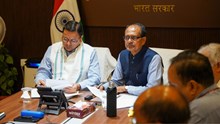
Nowadays Government of India is giving more priority to the welfare of farmers. In this regard, it is implementing several farmers' welfare schemes to revitalize the agriculture sector and to improve their economic conditions.
Therefore, the government has rolled out new initiatives, schemes, programmes and plans to benefit all the farmers. These agriculture schemes or programmes are very helpful for the farmers and he or she must know about it so as to take its benefit.
Here are some important government schemes in agriculture
1. Soil Health Card Scheme
The scheme was launched in 2015 to help state governments in issuing Soil Health Cards to all farmers across the country. The Soil Health Cards offer farmers information on the nutrient condition of their soil, as well as advice for the proper application of fertilizers to improve soil health and fertility.
2. Pradhan Mantri Fasal Bima Yojana (PMFBY)
PMFBY is an actuarial premium based scheme under which farmer has to pay a maximum premium of 2% for Kharif, 1.5% for Rabi food & oilseed crops and 5% for annual commercial/horticultural crops and remaining part of the actuarial/bidded premium is shared equally by the Centre and State Government.
One of the objectives of the scheme is to facilitate prompt claims settlement. The claims must be settled within two months of harvest subject to the timely provision of both yield data and share of premium subsidy by the State Government.
3. Neem Coated Urea (NCU)
This scheme is initiated to regulate the use of urea, enhance the availability of nitrogen to the crop and reduce the cost of fertilizer application. NCU slows down the release of fertilizer and makes it available to the crop in an effective manner. The entire quantity of domestically manufactured and imported urea is now neem coated. It reduces the cost of cultivation and improves soil health management.
4. Pradhan Mantri Krishi Sinchai Yojana (PMKSY)
It was launched on 1st July 2015 with the motto of ‘Har Khet Ko Paani’ for providing end-to-end solutions in the irrigation supply chain, viz. water sources, distribution network, and farm-level applications.
PMKSY not only focuses on creating sources for assured irrigation but also creating protective irrigation by harnessing rainwater at the micro-level through ‘Jal Sanchay’ and ‘Jal Sinchan’.
Micro-irrigation is to be popularised to ensure ‘Per drop-More crop’. PMKSY adopts State level planning and projects execution that allows States to draw up their own irrigation development based on District Irrigation Plans and State Irrigation Plans.
Components:
-
Accelerated Irrigation Benefit Programme(AIBP): implemented by Ministry of Water Resources, RD & GR.
-
PMKSY (Har Khet ko Pani): implemented by Ministry of Water Resources, RD & GR
-
PMKSY (Watershed): implemented by the Department of Land Resources.
-
PMKSY(Per Drop More Crop - PDMC)
5. Paramparagat Krishi Vikas Yojana (PKVY)
Paramparagat Krishi Vikas Yojana is implemented with a view to promoting organic farming in the country. To improve soil health and organic matter content and increase the net income of the farmer so as to realize premium prices. Under this scheme, an area of 5 lakh acres is targeted to be covered through 10,000 clusters of 50 acres each, from the year 2015-16 to 2017-18.
6. National Agriculture Market (e-NAM)
It provides an e-marketing platform at the national level and supports the creation of infrastructure to enable e-marketing.
This innovative market process is revolutionizing agriculture markets by ensuring better price discovery. It brings in transparency and competition to enable farmers to get improved remuneration for their produce moving towards ‘One Nation One Market’.
7. Micro Irrigation Fund (MIF)
A dedicated MIF created with NABARD has been approved with an initial corpus of Rs. 5000 crore (Rs. 2000 crore for 2018-19 & Rs. 3000 crores for 2019-20) for encouraging public and private investments in Micro-irrigation. The main objective of the fund is to facilitate the States in mobilizing the resources for expanding coverage of Micro Irrigation.
MIF would not only facilitate States in incentivizing and mobilizing resources for achieving the target envisaged under PMKSY-PDMC but also in bringing additional coverage through special and innovative initiatives by State Governments.
An Advisory Committee has been set up to provide policy direction and ensure effective planning, coordination, and monitoring of the Micro Irrigation Fund.
8. Agriculture Contingency Plan
Central Research Institute for Dryland Agriculture (CRIDA), ICAR has prepared district level Agriculture Contingency Plans in collaboration with state agricultural universities using a standard template to tackle aberrant monsoon situations leading to drought and floods, extreme events (heat waves, cold waves, frost, hailstorms, cyclone) adversely affecting crops, livestock and fisheries (including horticulture).
Total 614 district agriculture contingency plans are placed in the ‘farmer portal’ of the Ministry of Agriculture and Farmers Welfare, Government of India (http://www.farmer.gov.in) and also in the ICAR / CRIDA website (http://www.crida.in) for downloading the full plan by stakeholders for operational use.
9. Rainfed Area Development Programme (RADP)
Rainfed Area Development Programme (RADP) was implemented as a sub-scheme under Rashtriya Krishi Vikas Yojana (RKVY).
















